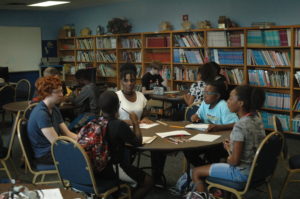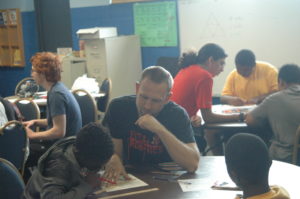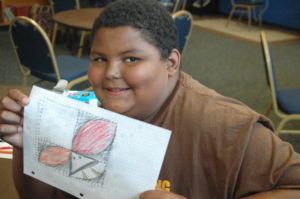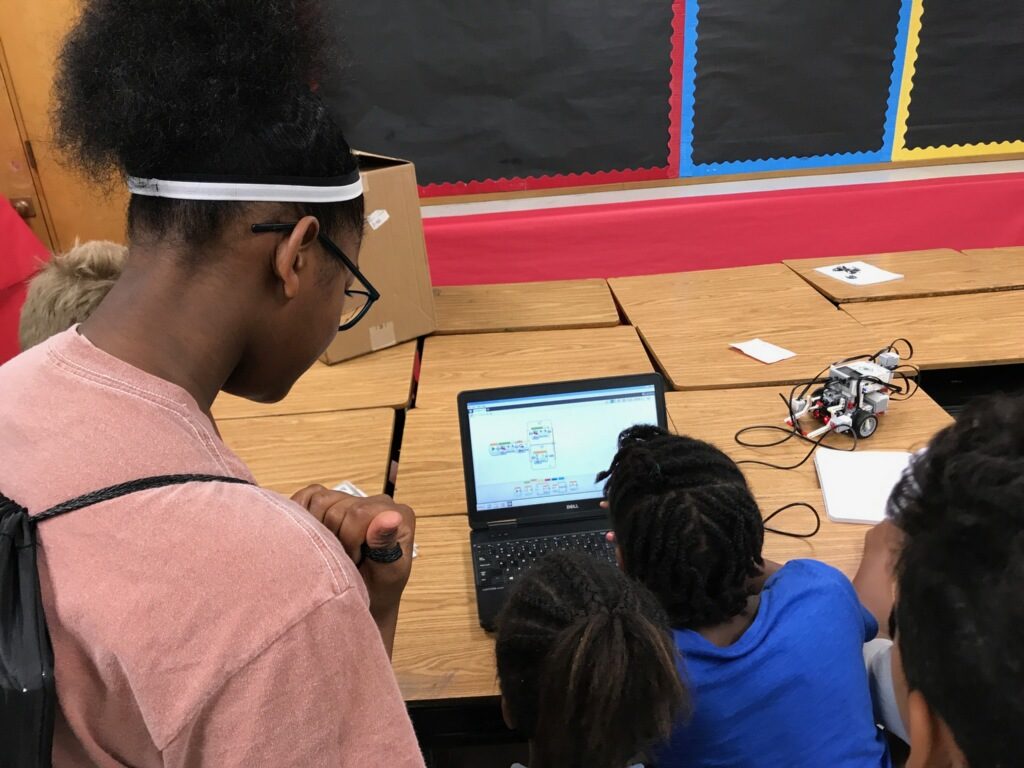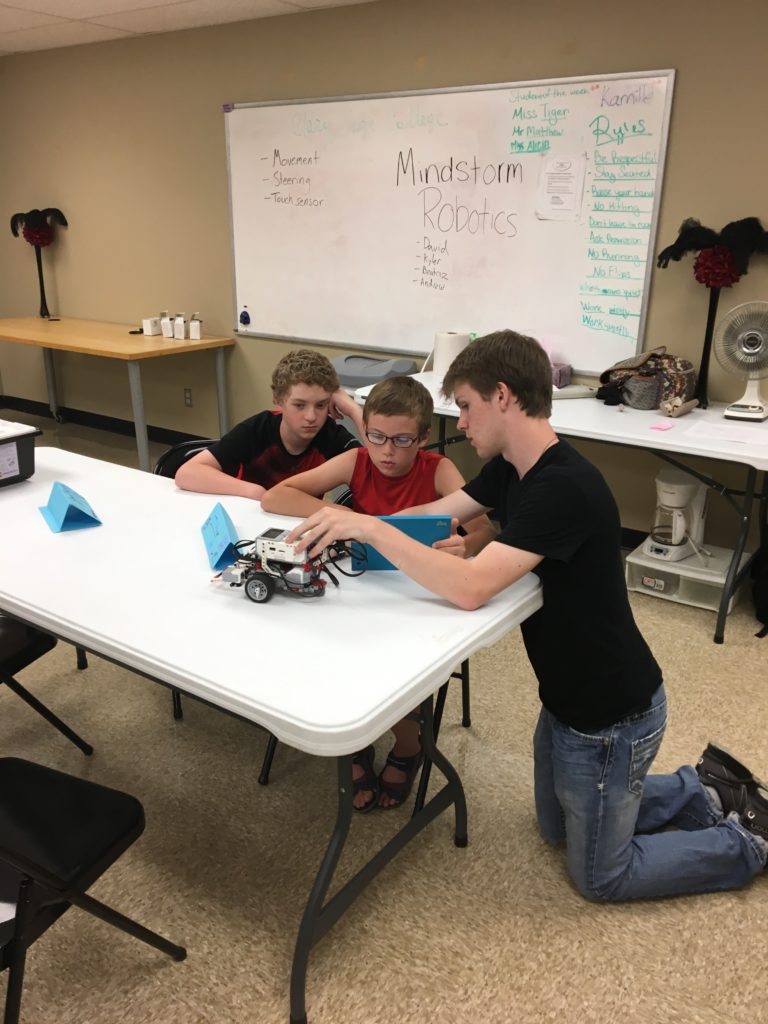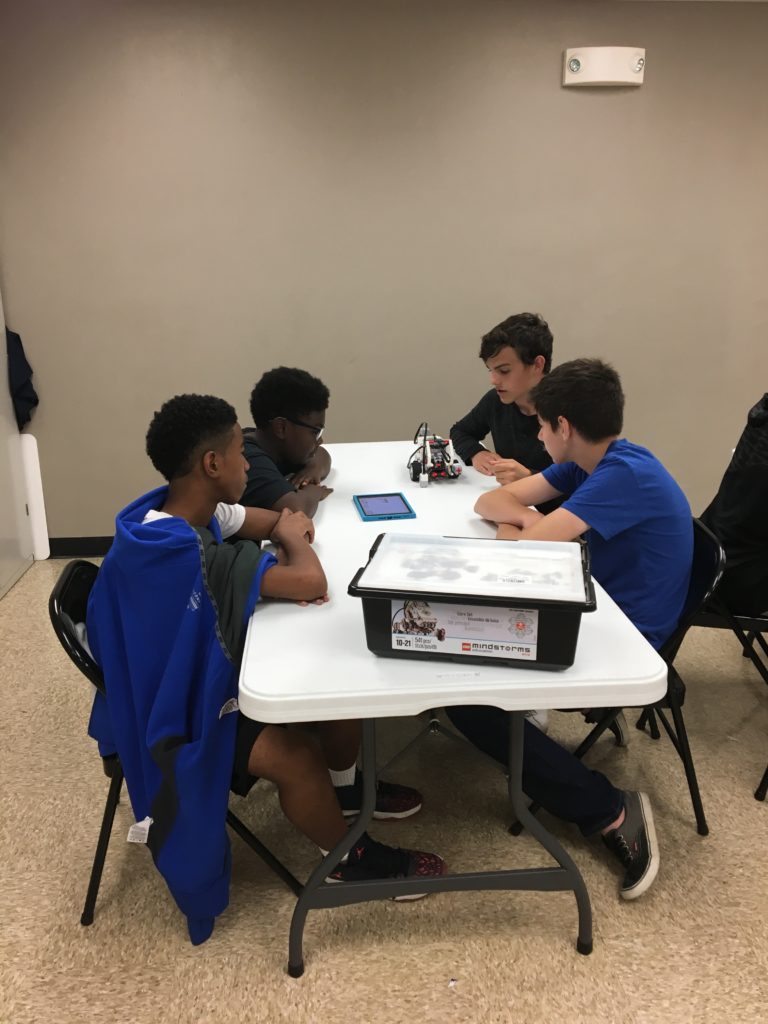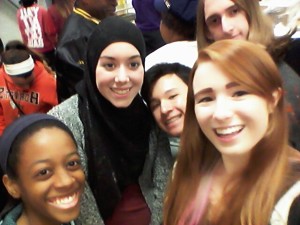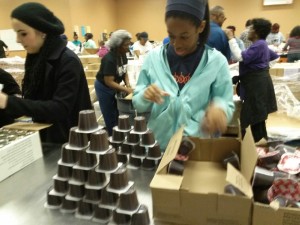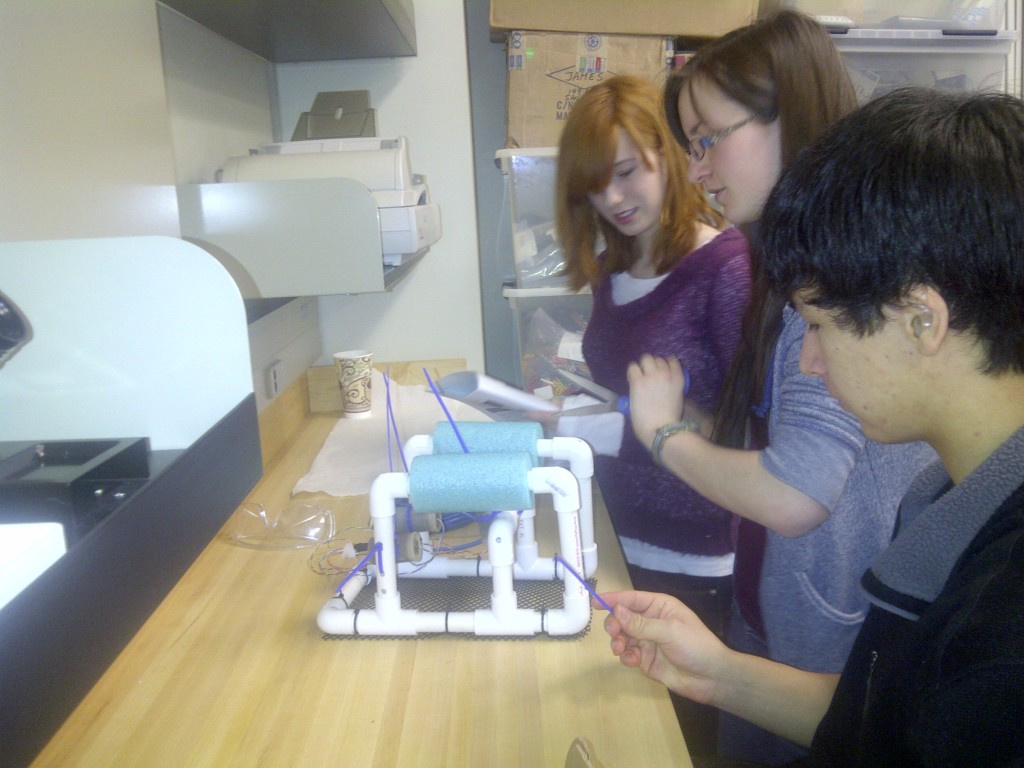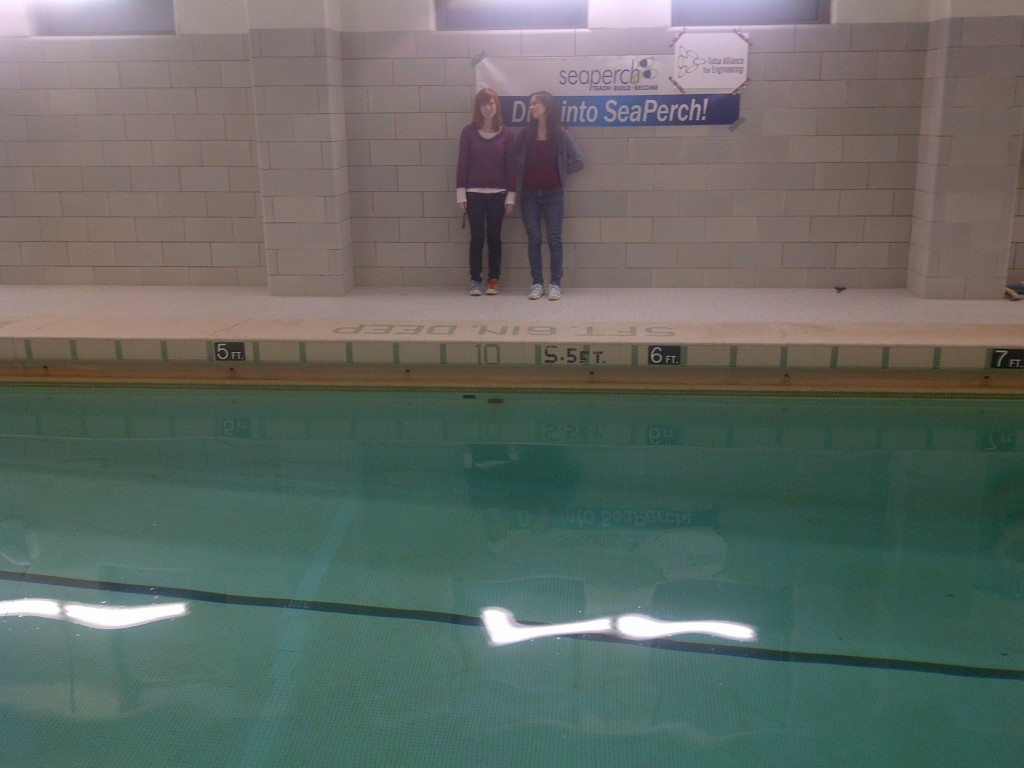The Booker T. Washington RoboHornets are very involved in their community.
Boys and Girls Club
During the summer of 2018, we taught a week-long summer camp at The Salvation Army North Mabee Center Boys and Girls Club. It was a STEAM camp, with each day focused on one of the letters.
Day one: Science
Our lesson ran from about 9:10 to about 11:50. We discussed astronomy and made a to-scale version of the solar system, with the sun being the size of a dime. The total size of our model was the size of a football stadium, with the planets being smaller than grains of rice.
Day two: Technology
This day’s lesson went from about 8:55 until 12:00. We talked about coding and computer languages, followed by an hour of code practice. After, we practiced hexadecimal and binary conversions.
Day three: Engineering
Our team was there from 9 to noon. The main activity of the day was building structures to keep eggs from breaking when they were dropped, followed by an assessment of the results with the kids. They then remade the structures based off of previous results and then dropped them again.
Day four: Art
Our lesson ran from about 9am to 12. We discussed how a series of lines can form a curve, and invited the kids to draw their own curves. After, we made origami cubes.
Day five: Math
We were there from 9 am to 12 pm and began with a presentation on fractals and examples of them in the real world. The kids were then taken outside to find and trace fractals. After showing what they had found, we drew Sierpinski’s triangle and combined everyone’s fractal to make a larger one. We then made 3D fractals with toothpicks and marshmallows.
Hawthorne
Some of our members volunteered at Hawthorne Elementary, a school in north Tulsa, during the summer of 2017. The goal was to assist in the creation of their own FLL team, which later went on to compete at a qualifier at the University of Tulsa and also made an appearance at our very own FLL Qualifier.
Dream Center
Dream Center hosted two summer camps in 2017 for at risk youth in north Tulsa. During the first camp, a few members of team 1209 taught the students how to build, program, and use FLL EV3 robots and their respective sensors. During the second camp, we taught lessons based on a letter of STEAM each day and then used the second week to help the kids apply what they learned by building Rube Goldberg machines. STEAM Post 26 helped to organize this event.
Food Bank of Eastern Oklahoma
The Robo-Hornets have teamed up with the Hornets Against Hunger to help feed the hungry!
We assisted in their yearly food drive, encouraging people to donate by grabbing their attention using robots. We also volunteer on a regular basis with their club at the Community Food Bank of Eastern Oklahoma, helping pack lunches for the Food For Kids program.
The Little Light House
Our team first partnered with the Little Light House and University of Tulsa (TU) in 2013 to build Rusty, a robot. The goal of the project was to create a robot that would allow children with limited use of their hands to manipulate toys inside of a sandbox to help them develop their cognitive abilities. We started work in June of 2013 and presented Rusty to the Little Light House in March of 2014. Since the end users were children, two of our major concerns were the user interface and safety. The RoboHornets worked in conjunction with TU on the project which gave us access to better facilities and equipment for the project.
 Currently, we are working with TU to re-design Rusty so that it will be smaller, lighter, and have interchangeable user interfaces for different children with different abilities.
Currently, we are working with TU to re-design Rusty so that it will be smaller, lighter, and have interchangeable user interfaces for different children with different abilities.
Rusty was our first project with the Little Light House. the goal of the project was to create a robot that would allow the disabled children to manipulate toys inside of a sandbox to help them build cognitive thinking skills. The project was started in June of 2013 and we presented rusty to the Little Light House in March of 2014. One of the major concern of the project was safety since the mains users would be disabled children. We worked in conjunction with TU on the Rusty which gave us access to better facilities and equipment for the project. We still visit the Little Light House every other month to do repairs on Rusty.
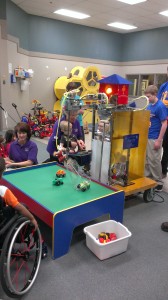
A second project was the “Coat of Many Colors”, which was a coat and hat with colored LEDs that lit up in different light patterns for different kinds of motion. The goal is to help children learn spatial awareness and motor skills. An Arduino Lily-Pad processor and several accelerometers were sewn into each garment.
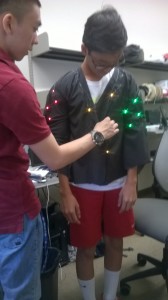

SeaPerch
SeaPerch is a water-based robotics competition that the RoboHornets began to participate in during the winter of 2013. The program was designed in order to recruit more girls onto the team. This aquatics program successfully inspired students to think outside of the box and to overcome specific and interesting challenges.
Sebastian, the 2013 SeaPerch robot, was designed with a PVC base and foam to keep it afloat. It was controlled using, SeaPerch’s own SeaSwitch Operating Box. Sebastian moved through the water with propellers powered by a 12 VDC Motor. The robot was also employed a 12 V Sealed Lead Acid Battery.
TU Storm
Booker T Robotics has teamed up with TU to create a robotics competition for local middle schools. The competition would focus almost entirely on autonomous programming because each team would receive identical pre-built robots. This competition existed in the past; it was stopped around 2005. The previous site for this competing can be found here.
